When it comes to children and screen time, many parents take a cautionary approach. After all, many there are many digital outlets that vie for kids’ attention, including TVs, tablets, computers, and smartphones that they can access at home or in school. And of course, parents also have to worry about lifestyle balance when it comes to sedentary and active recreation—the Centers for Disease Control and Prevention warns that over a third of children in the U.S. are considered either “overweight or obese.”
At the same time, children must become fluent in current technologies in order to function in an increasingly digital world. Parents can help direct their children’s attention to positive and healthy online communities, such as the world of Minecraft, an open-world building-block game for PC and console. Researchers at Radboud University believe that certain video games provide significant benefits to children, helping them regulate emotions, build strong social ties, and improve other cognitive abilities. The following list explores why Minecraft can be a valuable addition to your children’s playtime.
1. Easy Access
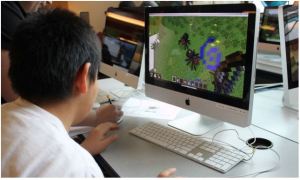 Both children and adults are easily captivated by the world of Minecraft. It’s like discovering a limitless container of Lego blocks. The open sandbox format of this game makes absolutely anything possible. Avatars can collect resources by punching trees and digging up dirt. Eventually, these resources can be used in formulas to create other tools. Tools can start simple—hammers, axes, and shovels, but players gain enough resources, they can build complex tools—circuits, trains, and even houses. MinecraftEdu, an academic organization comprised of educators and programmers, recommends the game to teachers because it is “easily adaptable to curriculum” with “sandbox play [that] allows for ANY kind of experience.”
Both children and adults are easily captivated by the world of Minecraft. It’s like discovering a limitless container of Lego blocks. The open sandbox format of this game makes absolutely anything possible. Avatars can collect resources by punching trees and digging up dirt. Eventually, these resources can be used in formulas to create other tools. Tools can start simple—hammers, axes, and shovels, but players gain enough resources, they can build complex tools—circuits, trains, and even houses. MinecraftEdu, an academic organization comprised of educators and programmers, recommends the game to teachers because it is “easily adaptable to curriculum” with “sandbox play [that] allows for ANY kind of experience.”
2. Inspiring Confident Exploration
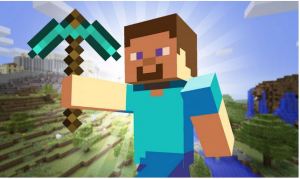 Contrary to other video games that have strict rules and linear event progressions, Minecraft is an open environment that doesn’t come built-in with structured quests. This means that youngsters can roam through this world and explore without an urgent set of tasks. However, they are still challenged by loose survival requirements, such as feeding their avatars, building shelter, or warding off enemies (giant spiders or green “Creepers”). Children are free to make mistake and succeed in the world of Minecraft. Wired notes that video games have the power to help players “overcome the fear of failure IRL” (In Real Life).
Contrary to other video games that have strict rules and linear event progressions, Minecraft is an open environment that doesn’t come built-in with structured quests. This means that youngsters can roam through this world and explore without an urgent set of tasks. However, they are still challenged by loose survival requirements, such as feeding their avatars, building shelter, or warding off enemies (giant spiders or green “Creepers”). Children are free to make mistake and succeed in the world of Minecraft. Wired notes that video games have the power to help players “overcome the fear of failure IRL” (In Real Life).
3. Increased Creativity
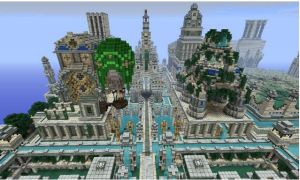
There’s no denying that Minecraft provides children with unprecedented opportunities for creativity. Some will explore extensive cave systems underground while other players might build lavish houses. Or who knows? Perhaps your child will reveal their architectural genius and create astonishing block cities and structures inspired by real or fictional locations.
4. Teamwork
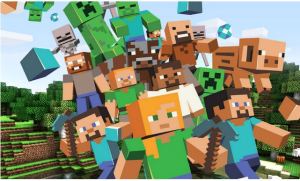 Your children can play for long hours on solo missions. But families can also set up personal servers, so that other friends and family members can join in on the fun. Parents can also download custom Minecraft maps, such as multiplayer adventures. Psychologists have been researching video games as a way to build social skills, since children get to engage with one another to overcome obstacles and achieve success. In an American Psychological Association (APA) article, Dr. Isabela Granic describes studies that reveal “People who play video games…that encourage cooperation are more likely to be helpful to others while gaming than those who play the same games competitively.”
Your children can play for long hours on solo missions. But families can also set up personal servers, so that other friends and family members can join in on the fun. Parents can also download custom Minecraft maps, such as multiplayer adventures. Psychologists have been researching video games as a way to build social skills, since children get to engage with one another to overcome obstacles and achieve success. In an American Psychological Association (APA) article, Dr. Isabela Granic describes studies that reveal “People who play video games…that encourage cooperation are more likely to be helpful to others while gaming than those who play the same games competitively.”
5. Problem Solving
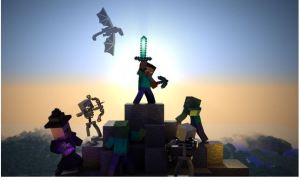 Children must discover new resources and experiment with different recipe combinations to create tools in Minecraft. They must figure out how to build a shelter before night falls and feed their avatar. Research conducted by S.R.I. International reveals that video game play might be responsible in measurable problem-solving and memory improvements.
Children must discover new resources and experiment with different recipe combinations to create tools in Minecraft. They must figure out how to build a shelter before night falls and feed their avatar. Research conducted by S.R.I. International reveals that video game play might be responsible in measurable problem-solving and memory improvements.
6. Parents Can Play Too
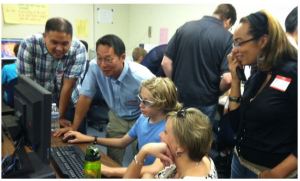
Due to the game’s extremely accessible entry point, scale-able levels of complexity, and group-play features, parents can also get in on the Minecraft action. Your building and survival experiences in Minecraft can be a great bonding exercise for the entire family.
7. It Teaches Resource Management
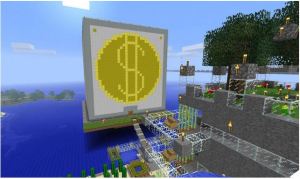 Once children become thoroughly engrossed in Minecraft, they begin to start calculating the costs of their resources. For example, wood can be acquired by hand, but it’s faster to use an axe. However, all of these tools will eventually wear out, necessitating even more resources. Your child will soon be weighing the economics of labor and resources as they seek to craft the thousands of recipes used in this game.
Once children become thoroughly engrossed in Minecraft, they begin to start calculating the costs of their resources. For example, wood can be acquired by hand, but it’s faster to use an axe. However, all of these tools will eventually wear out, necessitating even more resources. Your child will soon be weighing the economics of labor and resources as they seek to craft the thousands of recipes used in this game.
8. Geometry Skills

There’s no doubt that your children will get to exercise their spatial awareness and geometry skills while building structures with these blocks. Children will quickly learn what’s possible with the six faces of a cube, and how to stack blocks in a way that is structurally sound.
9. Community Engagement
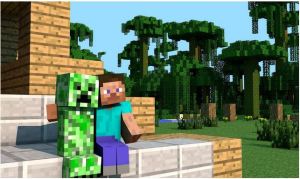 One of the coolest things about Minecraft is that other players are constantly sharing their custom-made modifications, quest maps, impressive artwork, and wiki entries. This culture encourages young people to explore their own ideas and contribute too. Depending on your child’s age, you might want to explore special public servers, forums, and wiki guides together and see how other players customize their games.
One of the coolest things about Minecraft is that other players are constantly sharing their custom-made modifications, quest maps, impressive artwork, and wiki entries. This culture encourages young people to explore their own ideas and contribute too. Depending on your child’s age, you might want to explore special public servers, forums, and wiki guides together and see how other players customize their games.
10. Age-Appropriate Content
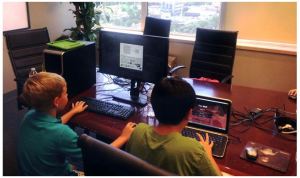
Finally, Minecraft can be played by children of many ages. It has been rated for people ages seven and up by the Pan European Game Information (PEGI) and ages four and up for the iOS version. Yes, there is some use of weapons against enemies in the game; however the interactions are not graphic at all. And parents can always set the game to “Peaceful” mode, so that children don’t encounter monsters at all.
